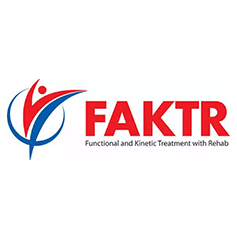Vitamin D: A key ingredient for bone health, muscle function and immune response by Fran Taylor
Diet and, in particular, vitamin D can be an important factor in injury development, especially bone stress injuries and stress fractures. Fran Taylor, our resident Nutritionist, returns to the site today to discuss this important vitamin and its important roles for runners and other athletes. Nutrition is often forgotten in patient care, if you’d like to find out more see Fran’s articles on diet and tendinopathy, what to eat to maximise strength gains and recommendations for vegan runners.
Preserving bone health, optimising muscle recovery and having a better ability to resist coughs and colds are pretty important factors for runners of all levels from your park run regular to professional athletes. Vitamin D is a key nutrient involved in all these biological actions; its worth taking note then that approximately 1 in 5 of the UK population have low vitamin D levels (defined as serum levels below 25nmol/L). Let’s look at the role of vitamin D in the body, how it could impact running performance and how best to avoid deficiency.
Vitamin D is a fat-soluble vitamin that functions as a hormone, similar in structure to steroid hormones like oestrogen and testosterone. There are vitamin D receptors present in many cells of the body including muscle, bone, brain, kidneys, immune and intestinal cells. This is what we know about the impact of insufficient levels and the potential of optimal levels.
Bone Health
Vitamin D’s role alongside calcium in preserving bone health is well known. If you have a calcium rich diet but insufficient vitamin D, you cannot absorb the calcium from your gut into your bones and cells where it’s needed. A deficiency leads to rickets in children and osteomalacia in adults; bones become softer and sufferers experience bone pain and muscle weakness. Vitamin D deficiency can be a factor in stress fracture development and should be a consideration alongside energy availability and calcium levels.
Muscle function, repair and recovery
In recent years there has been new interest in vitamin D’s role in optimising muscle function. We know that severe deficiency leads to muscle weakness, interestingly there is recent evidence which may suggest that vitamin D plays a role in muscle repair and remodelling. A recent randomized controlled trial (RCT) showed that raising baseline vitamin D serum concentrations from 25 nmol/L to > 75 nmol·l−1 via supplemental vitamin D3 (at 4000 IU/day) had a positive effect on muscle recovery of force following a bout of damaging eccentric exercise. This may be important for runners wanting to recover quickly from a training session or help enhance a physiotherapy programme to enable a return to running after injury.

Immune response and infection:
A recent meta-analysis and systematic review by the BMJ concluded that vitamin D supplementation protected against acute upper respiratory tract infection (URTIs), other studies on athletes and the general population have also shown negative associations between vitamin D concentration and incidences of URTIs. So adequate levels may help keep you cough and cold free and on your feet for longer.
Why is upwards of 20% of the UK population Vitamin D deficient and where do we get it from?
There are two sources of vitamin D in the UK – exposing our skin to sunlight, aka skin synthesis of vitamin D, and diet.
- Dietary sources include fortified foods like margarine and cereals as well as egg yolk, oil rich fish (tinned salmon being the best source) liver, kidney and mushrooms exposed to sunlight (you can do this yourself by popping a punnet of mushrooms underside up on a windowsill for 1-2 hours between 10am-3pm on a sunny day #lifehacks!)
- Skin synthesis is the main source of vitamin D as the UK’s intake of dietary sources are inadequate. In the UK we can only absorb the right wavelength of sunlight to make vitamin D between the months of April to September, between the hours of 11-3pm. This means that majority of the UK population tend to be have sub-optimal Vitamin D levels, particularly through the winter months.
Should we all be taking a supplement?
Runners who spend a lot of time outdoors are less at risk of deficiency but unless you get tested you can’t know for sure. The Department of Health recommends a 10ug supplement during the winter months, but supplements are available that contain much higher amounts, and like most things in nutrition, you can have too much of a good thing. Excessive amounts of Vitamin D can be toxic, raising the level of calcium in your blood which can damage your heart and kidneys. If you haven’t been tested a good general recommendation is to take a supplement during the winter months of 10-20ug if you live in the northern hemisphere and, during the summer practise sensible sun exposure – this means 15 minutes of exposing your skin to the sun before applying cream of covering up.
So, Vitamin D is an important nutrient to be aware of; good practise is to include dietary sources, practise safe sun exposure and think about a supplement in winter. However, we don’t eat single nutrients, we eat food. One vitamin on its own isn’t the key to better health or performance and supplements do not replace a healthy and varied diet.
References









